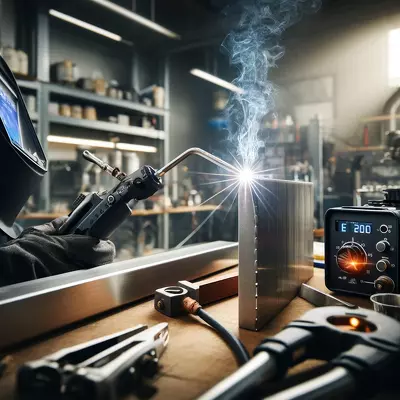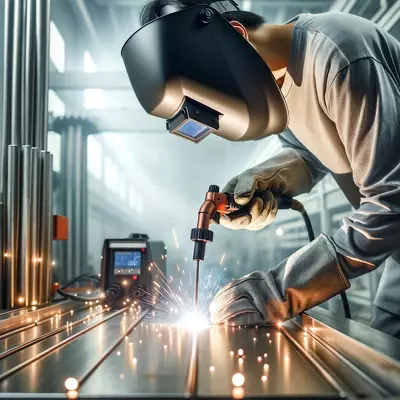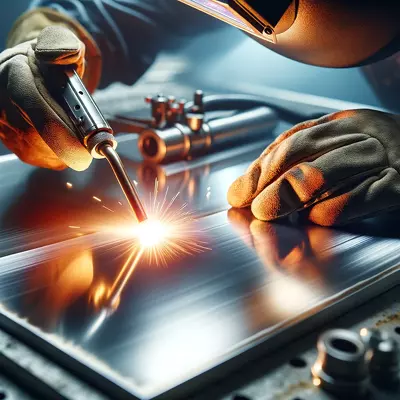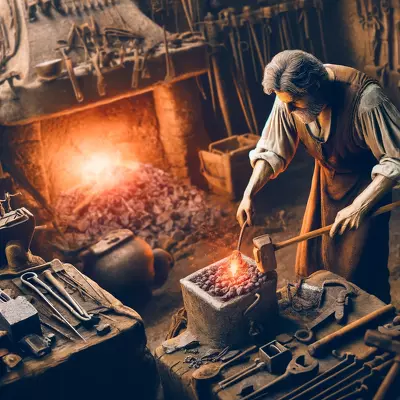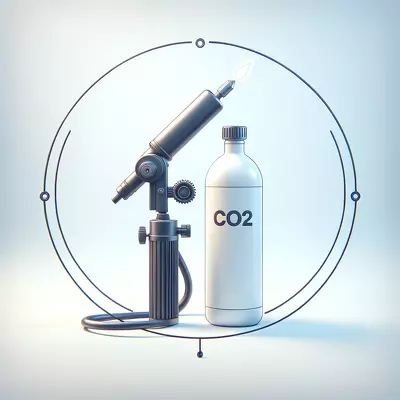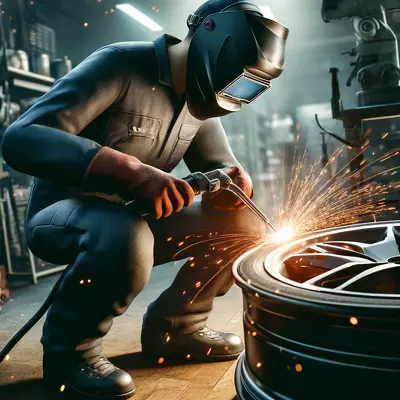Mastering the Art of Fusion: A Complete Guide on How to Use a Wire Feed Welder
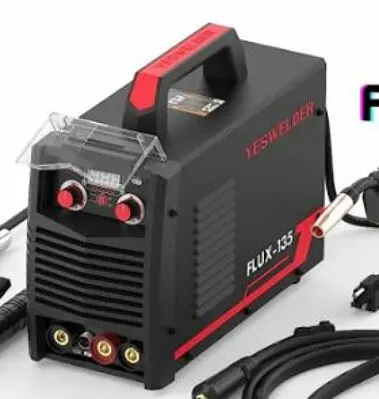
Using a wire feed welder is a skill that marries precision with practical application, enabling enthusiasts and professionals alike to join metals efficiently. This technique leverages a continuous wire feed as a filler metal, combined with an electric arc to melt and fuse materials. Ideal for both repair work and creative projects, mastering this welding method opens up a world of possibilities for fabrication and artistic expression, making it a coveted skill in various industries.
I. Introduction to Wire Feed Welding
A. Overview of Wire Feed Welding
Wire feed welding, also known as MIG (Metal Inert Gas) welding, is a popular welding process that utilizes a continuous solid wire electrode heated and fed into the weld pool, combining two base materials. This method uses a shielding gas to protect the weld area from atmospheric contamination, resulting in strong, high-quality welds. Its versatility and speed make it a preferred choice for industrial applications and hobbyists.
B. Benefits of Using a Wire Feed Welder
The use of a wire feed welder brings numerous advantages. It’s known for its efficiency and ease of use, making it suitable for beginners and seasoned welders alike. This welding technique allows for longer welds without interruptions, a cleaner work area due to less spatter, and the ability to weld thin or thick materials with adjustment of the settings. Additionally, it offers the flexibility to work with a variety of metals, including steel, stainless steel, and aluminum.
C. Equipment Needed for Wire Feed Welding
The essential equipment for wire feed welding includes the welder itself, a spool of welding wire, a shielding gas tank (typically argon or a mixture of argon and carbon dioxide), a regulator and hose for the gas, a welding helmet with auto-darkening lenses, gloves, and safety glasses. Having the right equipment is crucial for achieving optimal welding results and ensuring the welder’s safety.
II. Preparing to Use a Wire Feed Welder
A. Safety Measures and Protective Gear
Safety must be balanced in welding. Proper protective gear includes a welding helmet with an auto-darkening lens to protect the eyes from the bright arc light, fire-resistant gloves to handle hot materials, and a welding jacket or apron to shield against sparks and spatter. Additionally, working in a well-ventilated area is essential to avoid inhalation of harmful fumes.
B. Setting Up the Welder
Setting up the wire feed welder involves connecting the power source, attaching the gas supply, and loading the wire spool. It’s important to ensure that all connections are secure and that the wire feeds smoothly through the torch. A correctly set up welder lays the foundation for successful welding projects.
C. Selecting the Right Wire and Gas
The choice of wire and gas depends on the material being welded. For steel, an ER70S-3 or ER70S-6 wire is commonly used with a mixture of argon and carbon dioxide as the shielding gas. Welding aluminum requires an aluminum wire like ER4043 and pure argon gas. Selecting the appropriate wire and gas combination is critical for achieving strong and clean welds.
III. Basic Techniques for Using a Wire Feed Welder
A. Understanding the Controls
Familiarizing oneself with the welder’s controls is the first step in mastering wire feed welding. The main controls include the power setting, which adjusts the heat of the weld, and the wire feed speed, which controls how quickly the wire is fed into the weld pool. Balancing these settings is key to creating smooth, consistent welds.
B. Adjusting the Welder Settings
It is crucial to adjust the welder settings to match the thickness of the material and the welding position. A higher power setting and faster wire feed speed are typically needed for thicker materials. In comparison, thinner materials require a lower power setting and slower wire feed speed to prevent burning through.
C. The Welding Process
The welding process involves holding the torch at a 10-15 degree angle to the workpiece and moving it steadily along the joint being welded. The welder should focus on maintaining a consistent speed and distance from the workpiece to ensure even heat distribution and a uniform weld bead.
IV. Advanced Welding Techniques
A. Welding Different Types of Metals
Wire feed welding can be adapted to weld a range of metals by adjusting the equipment settings and technique. For instance, welding aluminum requires a push technique with a softer wire and pure argon gas, whereas steel welding employs a pull or drag technique with a stiffer wire and a mixed gas.
B. Troubleshooting Common Welding Problems
Common issues in wire feed welding include porosity, excessive spatter, and improper penetration. These problems can often be resolved by adjusting the gas flow, cleaning the workpiece thoroughly before welding, and experimenting with different wire feed speeds and power settings.
C. Tips for Clean and Strong Welds
Achieving clean and strong welds requires practice and attention to detail. Properly preparing the metal surfaces, choosing the right wire and gas combination, and mastering the welding technique are all critical components. Regular practice on scrap metal can help welders develop their skills and confidence.
V. Maintenance and Care of Your Wire Feed Welder
A. Routine Maintenance Tips
Keeping the wire feed welder in top condition involves regular maintenance tasks such as cleaning the gun liner, replacing the contact tip when necessary, and ensuring the wire spool and drive rolls are free of debris. Regular checks can prevent many common welding problems.
B. Troubleshooting the Welder
When issues arise with the welder’s performance, troubleshooting steps include:
- Checking the electrical connections.
- Ensuring the gas flow is correct.
- Inspecting the wire feed mechanism for blockages or wear.
Simple maintenance and troubleshooting can extend the life of the welder and improve weld quality.
C. When to Seek Professional Help
While the user can handle many maintenance and troubleshooting tasks, some situations may require professional assistance. If the welder is not functioning correctly despite troubleshooting efforts, consulting with a professional technician can help diagnose and resolve more complex issues.
VI. FAQs
Q: What is the best way to learn wire feed welding?
A: The best way to learn wire feed welding is through a combination of formal training, such as classes or workshops, and hands-on practice. Starting with basic techniques and gradually moving to more complex projects can build skill and confidence.
Q: Can wire feed welding be used outdoors?
A: Yes, wire feed welding can be used outdoors, but it’s important to shield the welding area from wind to prevent dispersion of the shielding gas, which can affect weld quality.
Q: What materials can be welded with a wire feed welder?
A: A wire feed welder can weld a variety of materials, including steel, stainless steel, aluminum, and more, depending on the wire type and gas used.
Q: How do I prevent warping in thin metals when welding?
A: To prevent warping in thin metals, use lower heat settings, weld in short bursts to minimize heat input, and clamp the workpiece to a larger metal object to dissipate heat more effectively.
Q: What is the difference between MIG and TIG welding?
A: MIG welding uses a continuously feeding wire and a shielding gas to create the weld, making it faster and easier to learn. TIG welding requires more skill, using a non-consumable tungsten electrode and often a filler metal, offering greater control for precision work.
Q: How do I choose the right wire thickness for my project?
A: The right wire thickness depends on the thickness of the materials being welded. As a general rule, thicker materials require a thicker wire. Manufacturer recommendations and welding charts can guide you in selecting the appropriate wire.
Q: How do I weld sheet metal with a wire feed welder?
A: Welding sheet metal requires a delicate balance of heat and speed to avoid burn-through. Use a lower power setting, adjust the wire feed speed to match, and use a series of tack welds or a stitching technique to control heat input.
Q: What gas pressure should I use for MIG welding?
A: The gas pressure for MIG welding typically ranges between 20 and 25 cubic feet per hour (CFH). However, this can vary depending on the type of gas and welding conditions. Always refer to the welder’s manual and gas supplier recommendations.
VII. Conclusion
A. Embracing the Journey
Mastering the art of wire feed welding is a journey of continuous learning and practice. The skills developed through welding are not only practical but can also foster creativity and innovation in projects ranging from simple repairs to intricate fabrications.
B. The Transformative Power of Twin Flame Reunions
The transformative power of mastering wire feed welding parallels the journey of personal and professional growth. As welders refine their technique and overcome challenges, they unlock new potentials in their work, showcasing the importance of dedication and the pursuit of excellence.
VIII. Suggested Readings
Before diving into the practical world of wire feed welding, enriching your knowledge through reading can be incredibly beneficial. Here is a selection of books that offer valuable insights into welding techniques, safety, and creativity in metal fabrication.
- “Metals and How To Weld Them” by T. J. Jefferson and Gorham Woods – This book provides a deeper understanding of the properties of different metals and the best practices for welding them.
- “Modern Welding Technology” by Howard B. Cary – A detailed textbook covering advanced welding technologies and processes for those looking to further their technical knowledge.
- “Artistic Metal Welding” by Robert L. Wood – Inspires ideas and techniques for creative projects, showcasing the artistic possibilities of welding.
After exploring these resources, you’ll have a well-rounded view of both the technical and creative aspects of welding. Whether you’re a novice looking to start your welding journey or a seasoned professional aiming to enhance your skills, these books offer valuable insights to help you achieve your goals.

